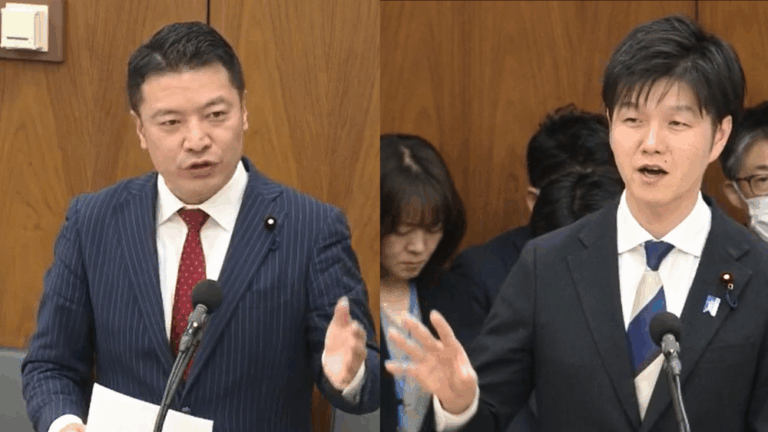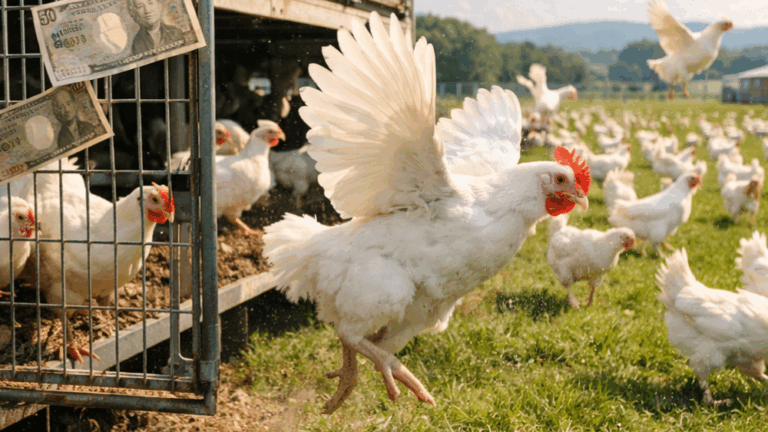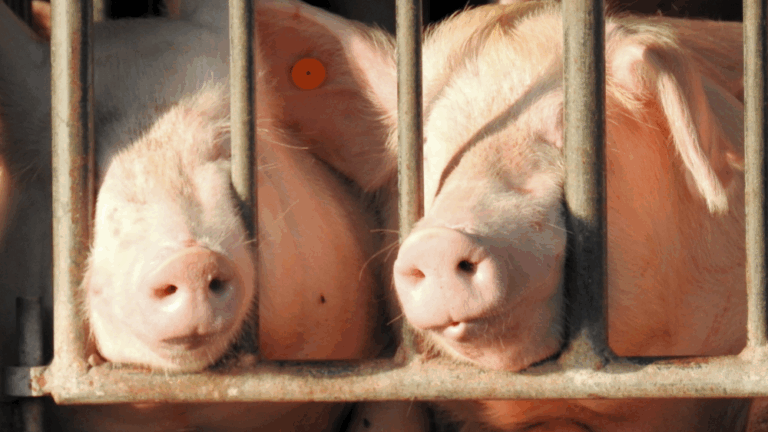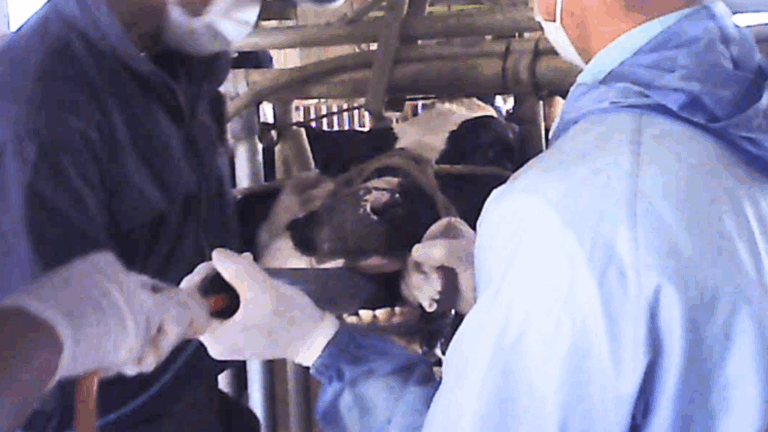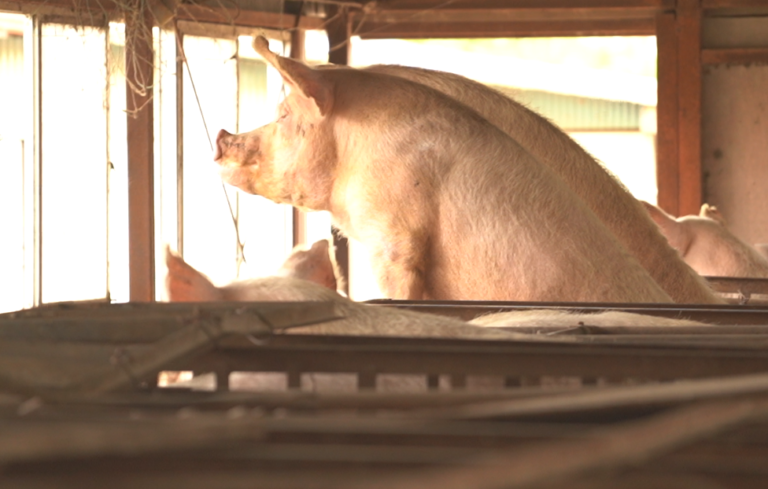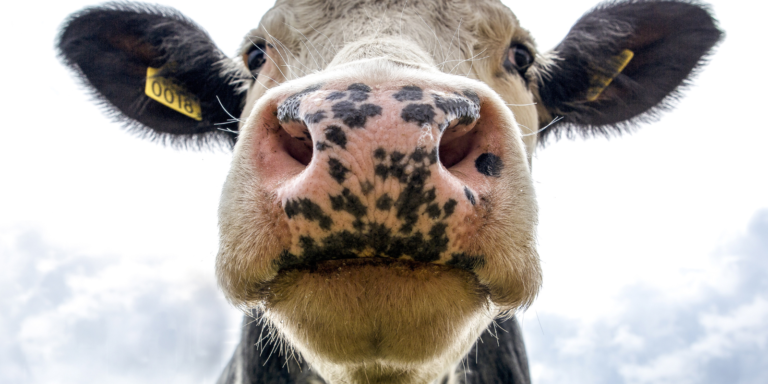In Japan, binding regulations for animal welfare related to slaughter do not exist. Many animals in slaughterhouses are under extreme thirst.

The conditions of pigs and cows in Japanese slaughterhouses
(2011 Investigation conducted by Meat Hygiene Inspection Center) http://nichiju.lin.gr.jp/test/html/mag/06612/d1.pdf
According to the research above, 50.4% of cows and 86.4% of pigs in slaughterhouses have no water to drink. (Only 7% of slaughterhouses kill all animals on the same day they are brought in.)
No official investigations have been conducted to research conditions of chickens in slaughterhouses. However, none of the poultry processing plants we have privately visited provide food or water to chickens. We suspect no processing plants in Japan supply water to their chickens. Seven to ten hens are packed in a small container before transportation. All of the containers are placed on top of each other in a truck. Even in a slaughterhouse, the hens are kept in the container, and the slaughterhouse does not have a system to give water to the hens. However, we believe giving water is the least that humans must do for the hens since the hens are killed for our food. It is inhumane to let many animals experience the agony of dehydration. Giving water to animals at a slaughterhouse is widely recognized as an international standard. All slaughterhouses are obliged to provide animals with water under the Terrestrial Animal Health Code set by the Office International des Epizooties (OIE).
Terrestrial Animal Health Code
Chapter 7.5. Slaughter of animals Article 7.5.1.
Animals which have been transported in containers should be slaughtered as soon as possible. Mammals and ratites which are not taken directly upon arrival to the place of slaughter should have drinking water available to them from appropriate facilities at all times. Delivery of poultry for slaughter should be scheduled such that they are not deprived of water at the premises for longer than 12 hours. Animals which have not been slaughtered within 12 hours of their arrival should be fed, and should subsequently be given moderate amounts of food at appropriate intervals.
http://www.oie.int/index.php?id=169&L=0&htmfile=chapitre_aw_slaughter.htm
“Providing water deteriorate meat quality”
As the result of our interview research, we found out some livestock farmers believe giving water before slaughter lessens the meat quality. This belief is completely invalid. The results of a research conducted in 2013 by Obihiro University of Agriculture and Veterinary Medicine clearly show that supplying water would not affect the meat rating.
In her graduation thesis, Emi Nakao compared the cows which have access to water and ones which do not have access to water at a slaughterhouse. The results show a significant difference in their carcass weight. The carcass weight of the cows with water supply was heavier. The carcass yield rate was 1% higher. It means the profit of selling the carcass meat is 3320 yen per cow. One particular farm in this research sells approximately 1400 cows a year. The farm earns about 4.78 million yen (about 40,000 US dollars) a year. The research concludes hydrating animals in a stockyard leads to more a profitable method of animal slaughter.
–Source: Hoppo Journal (June, 2014)
Ministry of Health, Labour and Welfare which is in charge of slaughter practice in Japan says “No measures cannot be implemented.”
In 2005, Japan signed but has not yet ratified the OIE (Office International des Epizooties) code which sets the international standards of animal slaughter. It is unacceptable that Japan has not adopted the appropriate standards specified in the regulations.
Since January 2015, we have been requesting the Japanese government to take prompt actions regarding meeting the standards. However, there have not been any responses to our request. Therefore, we sent an official request through OIE in March, and finally the Japanese government agreed to have a meeting. During the meeting with the officers of the Ministry of Health, Labour, and Welfare, we asked the government to dissiminate the OIE code to the municipalities. They replied…
“The timing is not appropriate… because animal welfare is not well recognized in Japan. The Ministry of Health, Labour, and Welfare cannot tackle this issue without a certain ‘push’.”
The Japanese government took part in creating the OIE code. They must take actions to ratify the regulations. More than 20 years ago, the Ministry of Health, Labour and Welfare also created the guidelines for standardizing facility and equipment at slaughterhouses. According to the guidelines, appropriate drinking water facilities for livestock should be available at slaughterhouses. However, the Ministry of Health, Labour and Welfare needs a certain ‘push,’ for example, the Ministry of Agriculture, Forestry and Fisheries issuing the guidelines for transporting and slaughtering animals.
Therefore, we request supporters to express their concerns by filling out the following form and sending it to the Ministry of Health, Labour and Welfare.
The office in charge of slaughter is…
Milk and Meat Safety Section
Inspection and Safety Division
Department of Food Safety
the Ministry of Health, Labour and Welfare
Tel: 03-3595-2337
The form is accessible from
http://www.mhlw.go.jp/houdou_kouhou/sanka/koe_boshu/
Please add the above address in the content field (内容) section of the document.
We believe that it is important to continue our appeals to the ministry. However, animals at slaughterhouses are suffering in the horrible conditions at this moment, and it takes time to change the policy of the ministry. The Animal Rights Center is conducting our educational campaign by approaching local government, slaughterhouses and other related institutions.



